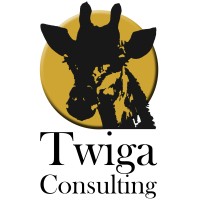Project Management Insights: Leading Complex Projects Smoothly
At Twiga Consulting, we know that managing a project—whether it’s an SAP implementation, an HR transformation, or an office automation rollout—can feel overwhelming. It’s not just about sticking to deadlines or staying within budget. It’s about aligning people, processes, and technology so the end result makes a real difference to your business.
Industry research confirms what many businesses already know: projects are rarely straightforward. They involve people, shifting priorities, and unexpected challenges. That’s why project management in 2025 requires more than technical know-how—it needs empathy, agility, and a steady hand guiding the process.
What Industry Reports Are Highlighting
- Multiple Stakeholders, Many Priorities
One of the biggest challenges in modern projects is managing competing interests across departments, business units, and external vendors. Aligning everyone on a common goal is often harder than it looks. - Rapidly Changing Conditions
Economic shifts, market pressures, and new technologies mean project environments change faster than ever. A rigid plan often collapses under these realities. - The Scope Creep Trap
Uncontrolled scope expansion remains one of the leading causes of project failure. Without clear boundaries, costs rise, timelines stretch, and teams lose focus. - Integration is Everything
Industry reports consistently highlight that one of the biggest pain points for organizations is system integration. Whether it’s SAP, HR, or payroll platforms, companies often struggle to get different technologies to “talk” to each other. Poor integration slows projects down, creates inefficiencies, and limits the value of new investments.
Best Practices for Smoother Delivery
- Blending Agile with Structure
Organizations are increasingly combining agile flexibility with traditional structures. This balance helps projects adapt to change while still keeping accountability clear. - Strong Governance from the Start
Clear roles, accountability frameworks, and decision-making structures are essential for keeping projects aligned and on track. - Open, Ongoing Communication
Regular and transparent communication with stakeholders builds trust, reduces confusion, and prevents costly misunderstandings. - Putting People at the Center
Change management is now widely recognized as the difference between success and failure. Training, support, and communication ensure employees are ready for adoption. - Reflect and Improve
Post-implementation reviews allow teams to capture lessons learned, refine processes, and strengthen delivery for future projects.
Project management isn’t just a process—it’s a journey. And like any journey, it’s smoother when you’ve got the right people walking alongside you. By following proven best practices, organizations can navigate complexity, balance structure with flexibility, and keep people at the heart of every decision.
At Twiga Consulting, we bring the expertise, tools, and hands-on support to help businesses deliver projects that don’t just finish—but succeed.
Insights sourced from PMI Pulse of the Profession Report (2025), Gartner Project Management Trends (2024), McKinsey Project Leadership Insights (2025), Deloitte Project Delivery Survey (2024), and Forbes Business Transformation Reports (2025).

